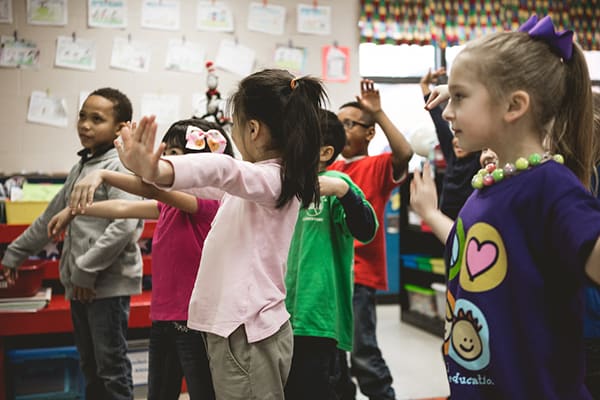The Essential Role of Movement in Learning

Scott McQuigg
Asking young students to sit still, listen, focus, complete assignments, not talk, and enjoy learning… all at the same time? We all tried, and it didn’t work.
Thankfully, our education vocabulary is shifting with words like blended, personalized, kinesthetic, differentiated, inclusion, culture, learning stations, project-based, game-based, soft skills, grit, student-centered, makerspaces… and the list could go on. Among dozens & dozens of teaching philosophies, there’s a common thread. Students succeed when we think strategically about how they learn, and the world they live in.
One crucial aspect of this is movement. Physical activity. Wiggling. The act of simply getting students up and out of their seats. Research shows that the brain actually lights up differently after a short episode of movement, and neural pathways are more speedy and efficient amongst fit kids.
One new study out of the University of Illinois shows a link between cortical thickness (sections of gray matter within the brain associated with maturation), fitness, and math scores. To put it simply, the more-fit kids in the study showed thinner cortical sections, signifying higher brain maturation. They also outscored their less-fit peers in the study’s math test.
An earlier study from 2012 used fMRI technology to monitor oxygen and blood flow in the brain while kids think, pay attention, and thwart distractions.
“Higher fit and lower fit children show different blood flow patterns while performing a task of cognitive control. The brain activation patterns in higher fit children are coupled with superior task performance. The fMRI activation differences are seen specifically in areas of the frontal cortex, known to play a role in higher-level cognitive skills.” -Laura Chaddock-Heyman
While studies like this one certainly reinforce the need for regular recess and P.E., the evidence also suggests that movement should be a regular part of the learning process. When kids move they feel energized, alert, and down-right happy – and now we know that it’s making their brains operate more maturely and efficiently.
As we think strategically about how to structure next-gen classrooms, the word ‘active’ belongs in the vocab list alongside blended, personalized, project-based, and many others. Teachers and administrators are making movement an hourly part of the instructional day, not only to benefit classroom culture and student health, but to make learning more effective.
GoNoodle, a website with interactive activities for active classrooms, participated in a study measuring the impact one activity had on math scores. In the activity, Mega Math Marathon, students run a “virtual marathon” next to their desks while answering math questions.
Brain power fueled by energizing movement led to a 50% improvement in test scores, compared to peers in a control group who never played the game.
So move the desks out of the way, there’s a high-energy race, stretching routine, or dance party to be had! After that, we’re onto our next PBL assignment… more focused, engaged, and happy. Science says so.
For more check out:
- 12 Reasons All Kids Should Try a Triathlon
- How to Create Student Fitness Opportunities & Physical Education in Online Learning
Scott McQuigg is co-founder and CEO of GoNoodle. Follow Scott on Twitter, @ScottMcQuigg.
Stay in-the-know with all things EdTech and innovations in learning by signing up to receive the weekly Smart Update.










0 Comments
Leave a Comment
Your email address will not be published. All fields are required.